What is Negima food? Negi onion explained with 4 Japanese dishes
What is Negima food in Japanese cuisine? Let’s dive right into the answer, and I’ll give you a lot more background information on Negima after that.
Negima refers to a meat dish with scallion or spring onion. The name originated from the word Negi which is a kind of local Japanese scallion. The most famous version of Negima is Yakitori Negima, a grilled skewer of chicken breast interspersed with spring onion.
Let’s look at it more closely and cover some of the different types of Negima.
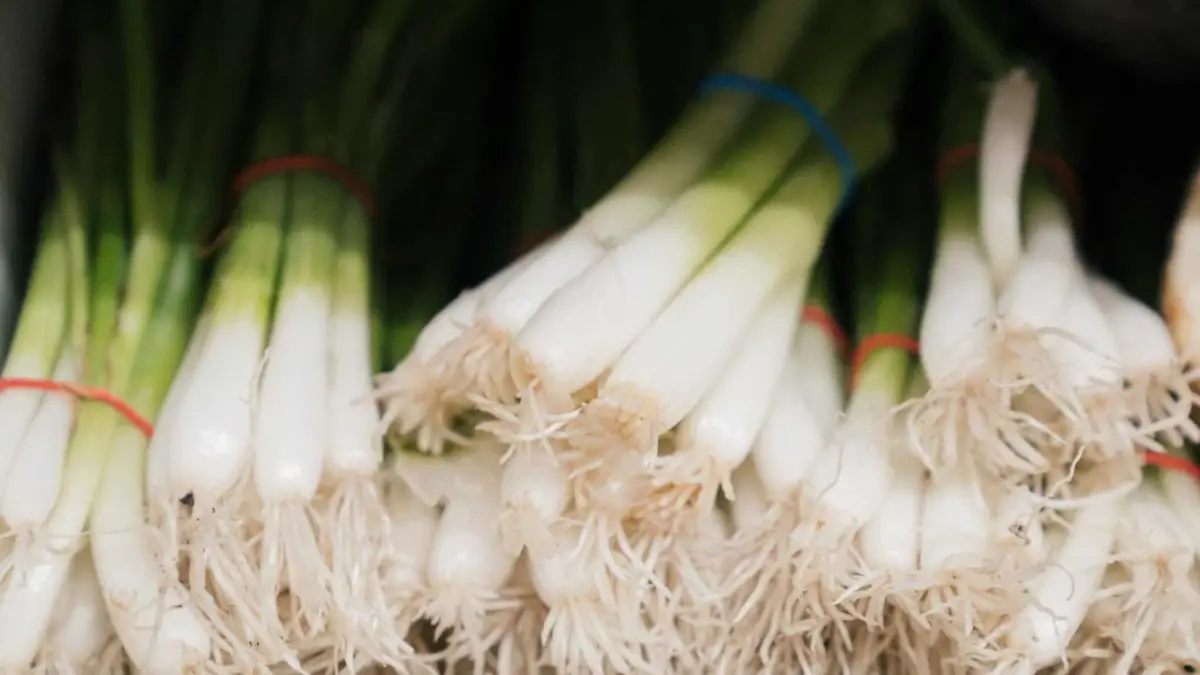
There is also Negimaki, which is a broiled beef strip rolled with scallions. Negi is also mostly used in hot pot dishes such as Nabe and Soba.

Check out our new cookbook
Bitemybun's family recipes with complete meal planner and recipe guide.
Try it out for free with Kindle Unlimited:
Read for freeIn this post we'll cover:
Brief information about negi (Japanese scallion)
Negi is a local species of scallion in Japan. It is thicker and longer than Welsh onion with a long white stem.
It is one of the most popular vegetables in Japanese cuisine as the taste is perfect to enhance flavors in many kinds of dishes.
The white stem has a strong onion taste and aroma. But after cooking, the taste will turn sweeter and lighter. Cooking with white Negi will create a mouth-watering aroma.
Meanwhile, the green part of Negi serves a similar purpose to scallion. It adds a fresh savory flavor to the dish with a slight crunchy texture.
Outside Japan, it might be hard to find a Japanese Negi. As a substitute, you can use Welsh onion instead.
Leeks may also work. But you still need to mix it up with scallion or green onions to deliver a more similar flavor.
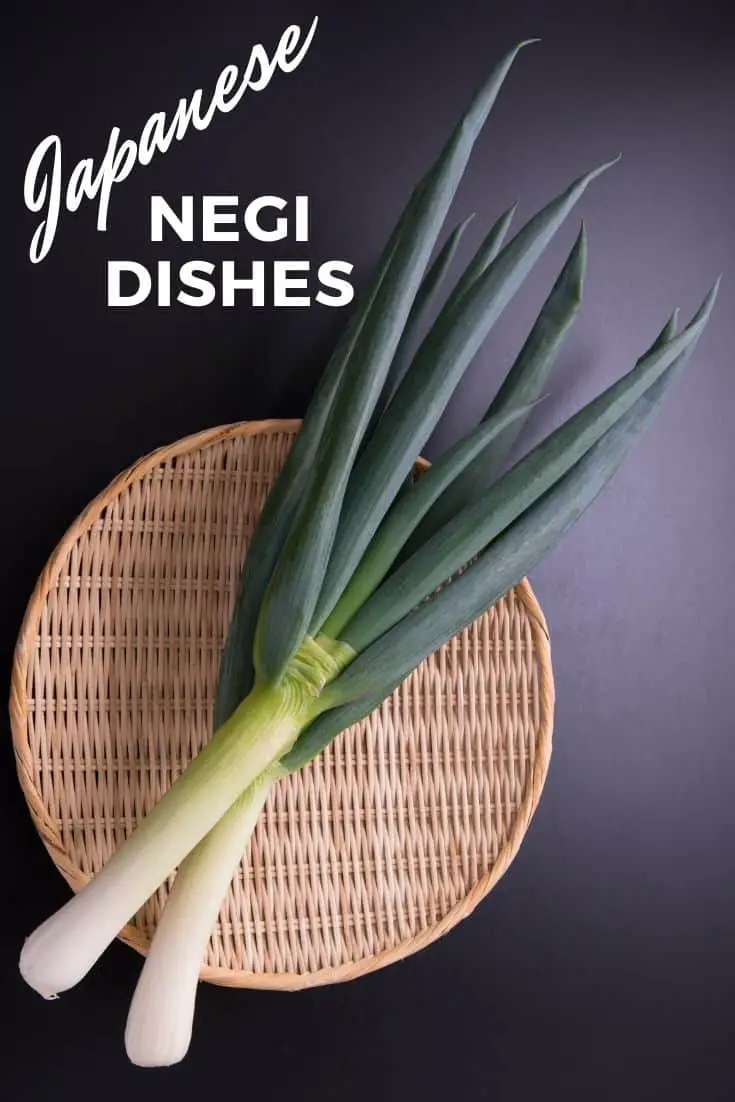
People believe that Negi can be beneficial to fight off cold disease or flu. During winter months or rainy days, people would cook soup with Negi to warm up their bodies.
Types of Japanese Negi
Japanese Negi is also popular with the name of Naga Negi (long onion) or Shiro Negi (white onion). But in Japan, there are several variations of Negi.
Each has its producing area and harvest season. Here are some of those:
Kujo Negi
Kujo Negi is from the Kyoto Prefecture. Its season falls around November-March. This variety has rather short roots. It also contains more slime on the inside.
Due to its sweet taste, Kujo Negi delivers the best flavors for Nabe dishes. That is how Negi Nabe has become one of the most popular cuisines in Kyoto.
Shimonita Negi
Shimonita Negi is from the Gunma Prefecture. Its season falls around November-January. The stem is very thick, up to 5-6cm in diameter.
This variety also has the stockiest green parts compared to other varieties of Negi.
During the Edo period, only the lords (shogunate) get to eat dishes with Shimonita Negi. That is why some people also call this variety Tonosama Negi (the lord’s Negi).
Senju Negi
Senju Negi is from the Soka, Koshigaya, and Kasubake. All are in the area of Saitama Prefecture. Its season falls around December-February.
People have been using a very traditional technique in cultivating it, which results in a very long part of the white stem. People started farming Senju Negi around 200 years ago, during the Edo period.
Unane Negi
Unane Negi is from Tokyo with its season falls around December-January. This cultivation is still rather new in Japan as people just started it 10 years ago.
But in the Setagaya district, people have been cultivating this variety for more than 500 years. Unane Negi has a softer taste of sweetness, which makes it tastes best for grilling.
Negima and other Japanese dishes with Negi
Negima refers to dishes where Negi and meat play as the main ingredients. Many people love the cuisine as those two ingredients complement each other.
The Negi can enrich the savory flavor of almost any meat.
Even without meat, Negi can also improve the taste of many dishes, especially the stew. That is why people love adding Negi to soup or stew dishes.
Yakitori Negima
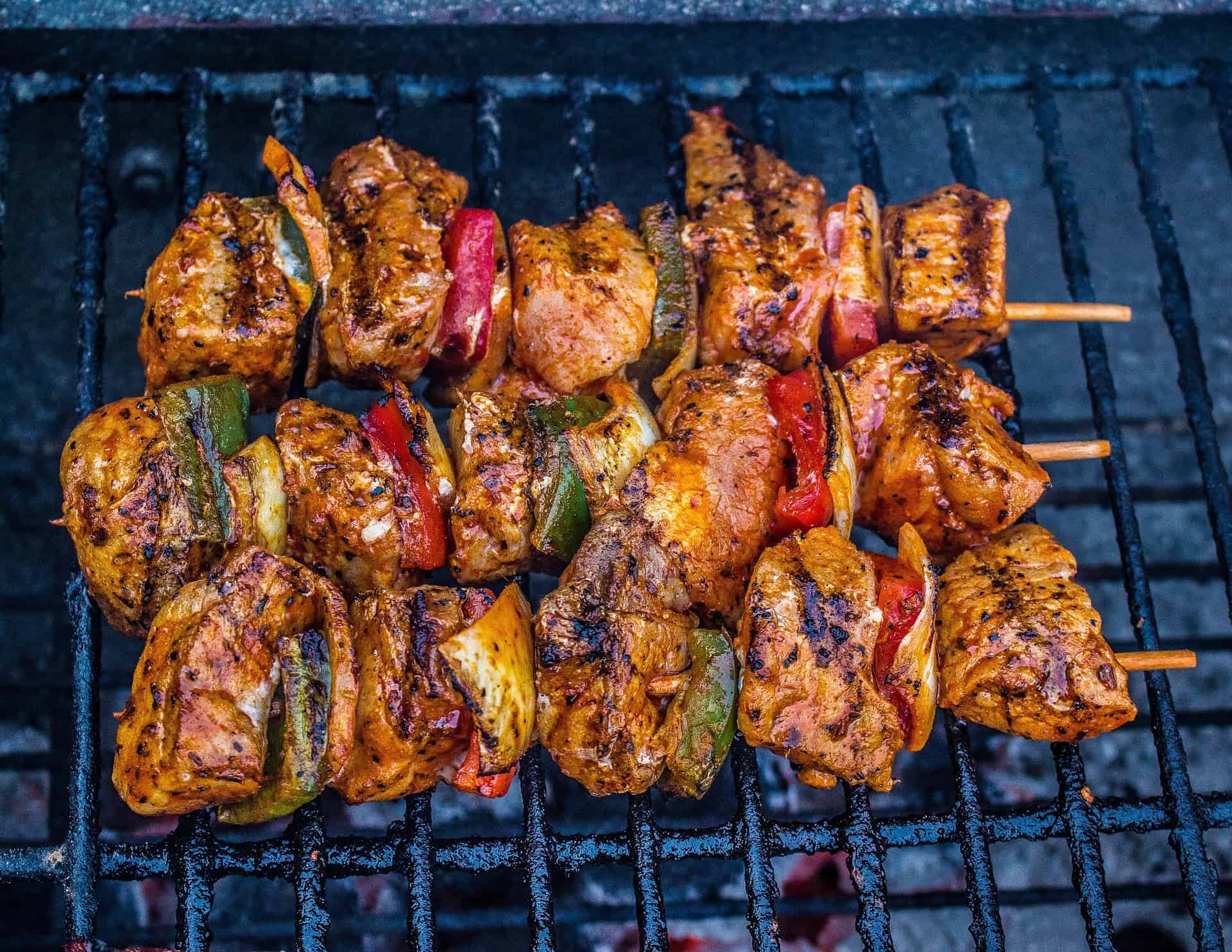
Yakitori Negima is the most famous and popular Negima dish in Japan. It is a Japanese version of a skewer chicken dish grilled over a charcoal fire.
There are many types of Yakitori, depending on what food is speared in. With Yakitori Negima, diced chicken breast and chopped Negi are skewing up interspersedly.
The seasoning includes salt and tare sauce.
This dish is authentic from Japan as it first appeared during the Meiji Era around the year of 1868-1912.
If you like to eat Yakitori or want to try to make this dish at home, you should definitely read my in-depth review of these Yakitori grills you can use at home.
It will make sure you get the right grill for your table or for just outside of your house in the yard.
Negimaki
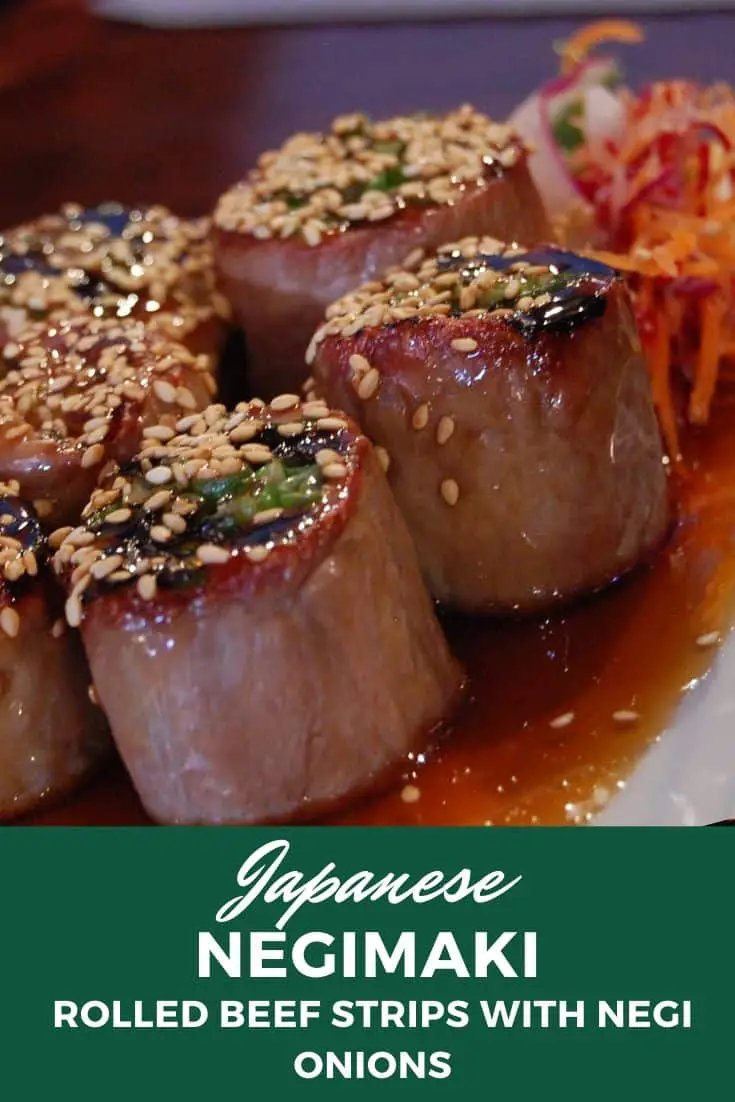
(this is a text overlay image based on the original work beef and scallion by stu_spivack on Flickr under cc)
Negimaki is a rolled up dish made of a beef strip and Negi. The cooking process includes broiling and marination in teriyaki sauce.
Unlike Yakitori Negima, the invention of Negimaki was not originally from Japan. The dish came out in the United States as a response to the high popularity of beef amongst western people.
According to the dish inventor, Negimaki was an adaptation of an authentic Japanese dish where bluefin tuna used to be the main ingredient.
Negima Nabe
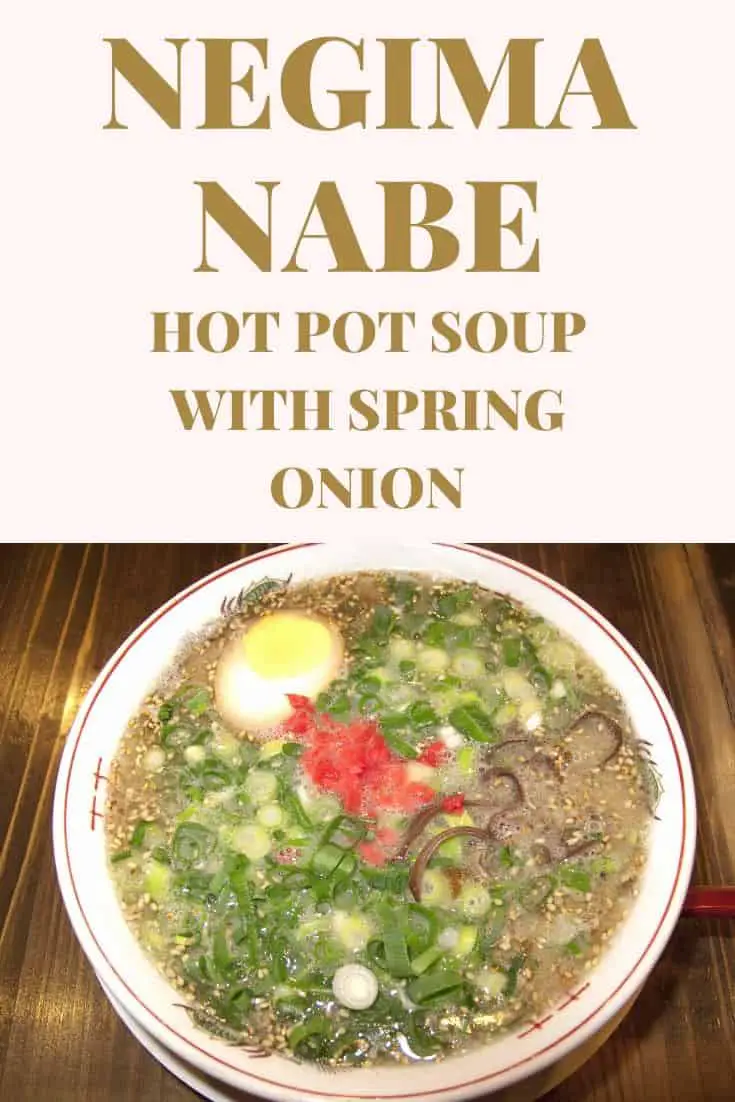
Nabe refers to a hot pot soup or stew where any kinds of food can be the ingredients.
One of the versions is Negima Nabe, which uses meat and negi as the main ingredients.
The meat can either be tuna, beef, or chicken. Negima Nabe is highly popular during cold weather.
Soups like these are a cornerstone of Japanese cuisine, and I’ve written this very lengthy post describing all of the different soup varieties you could make for a great Japanese style dinner.
Negi Soba

Soba is a noodle soup that can be in many variations. In Fukushima Prefecture, Negi Soba is the most popular one. This Soba has plenty of chopped Negi.
The serving of Negi Soba has a unique style. You will receive no chopsticks to use. Instead, they will provide long Negi sticks to use as chopsticks. It is not easy to tweeze the noodles with Negi chopsticks, yet it is fun to try.
Negi Soba usually also contains meat. It can either be duck, beef, or chicken.
Apart from those foods, people also use Negi as supporting ingredients in many dishes such as shabu, miso soup, saute cooking, and fried rice. Negi can also be roasted and served individually. Sometimes, people even cook Negi in orange juice.
If you love trying out Japanese culinary, there is no way to miss trying out dishes with Negi. Combined with beef or chicken meat, Negi will enhance its savory taste.
Negima might not be as famous as sushi or ramen. But it has the rich Japanese flavoring that would be a shame to miss out.
In fact, negi is so popular it’s used in almost all of the ramen variations, and it’s one of my favorite ramen toppings as you can read in my post here.
Check out our new cookbook
Bitemybun's family recipes with complete meal planner and recipe guide.
Try it out for free with Kindle Unlimited:
Read for freeJoost Nusselder, the founder of Bite My Bun is a content marketer, dad and loves trying out new food with Japanese food at the heart of his passion, and together with his team he's been creating in-depth blog articles since 2016 to help loyal readers with recipes and cooking tips.
